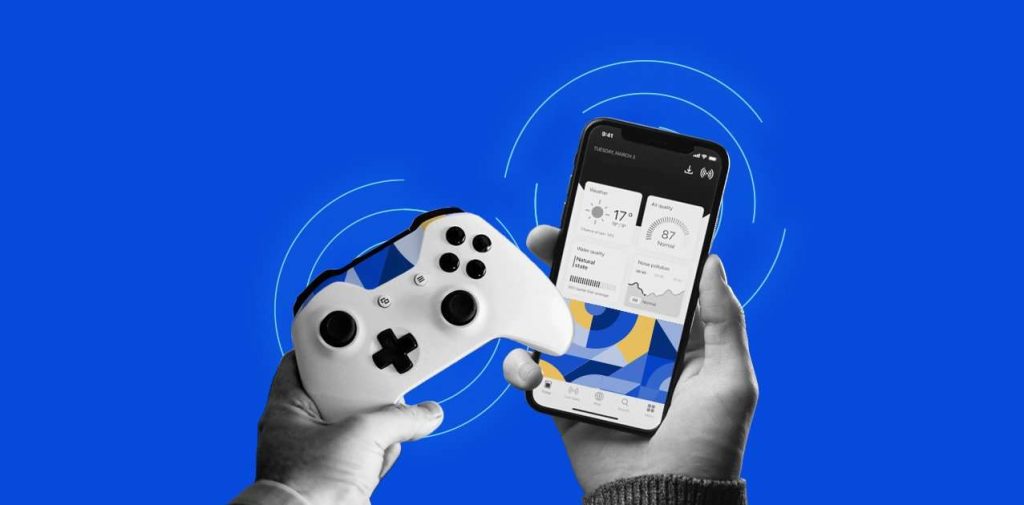Gaming has always been a realm where immersion matters above all else. From the earliest days of simple joysticks and pixelated screens to the modern era of ultra-realistic graphics and expansive open worlds, one thing has remained constant: the desire to feel more connected to the game. But what if the next big leap in gaming isn’t about graphics or storylines, but about touch? Enter haptic feedback—an innovation quietly transforming controllers and promising a future where you don’t just play games, you experience them. Haptic feedback goes beyond simple vibrations, offering nuanced tactile responses that mimic real-world sensations, making your interactions with digital worlds far more lifelike. Imagine feeling the recoil of a sniper rifle in a first-person shooter, the purr of an engine under your fingers in a racing game, or even the subtle patter of footsteps across different surfaces. The future of gaming controllers, in many ways, is being shaped by how convincingly developers can simulate touch, and the implications for player immersion are enormous.
Understanding Haptic Feedback: More Than Just a Vibration
For years, the term “vibration” was synonymous with haptic feedback, but modern controllers have taken this concept to an entirely new level. Today’s haptic systems can simulate textures, resistance, and directional forces. Unlike the old single-motor rumble, next-generation haptics utilize multiple actuators to deliver complex, localized feedback, meaning you can feel the precise direction and intensity of in-game actions. This development addresses a major pain point for gamers: the lack of tactile fidelity. In fast-paced games, such as first-person shooters or racing simulators, subtle cues from haptic feedback can convey information that was once purely visual or auditory. For example, feeling the tension of a bowstring, the shift of terrain under your vehicle, or the recoil of a firearm can dramatically enhance reaction times and immersion. Gamers no longer have to rely solely on their eyes and ears—now, touch becomes a critical layer of information, bridging the gap between the digital and the physical world.
The Science Behind the Sensation
Haptic feedback isn’t magic; it’s the product of sophisticated engineering and human physiology. Most advanced controllers use a combination of motors, piezoelectric actuators, and adaptive triggers to create sensations that mimic real-world physics. Piezoelectric actuators, in particular, can deliver very precise vibrations at different frequencies, allowing developers to differentiate textures or simulate environmental factors such as rain, wind, or even a heartbeat. This technology aligns perfectly with how our bodies perceive touch. The human skin has millions of nerve endings sensitive to pressure, vibration, and temperature. By leveraging this natural sensitivity, haptic feedback can create an almost instinctive response to in-game events, bridging the gap between imagination and perception. It’s fascinating to consider how such tiny devices embedded in a controller can manipulate our senses to the point where a virtual explosion feels physically real. For gamers, this isn’t just a novelty—it’s a new frontier of experiential storytelling and interactive realism.
The Gaming Experience Reimagined
Imagine playing a qqemas game where each spin not only generates visual excitement but also delivers tactile confirmation through vibrations that vary with each outcome. The sense of anticipation builds as your fingers feel the tension of the reels stopping one by one, heightening the thrill of every win or near-miss. In action games, haptic feedback can differentiate between different types of weapons or environmental hazards. In racing games, road texture, tire slippage, and engine feedback can all be felt directly in your hands, offering a level of immersion that visuals alone can’t match. Even in narrative-driven titles, subtle haptics can convey emotional cues—a soft, rhythmic pulse during a tense dialogue or a sudden jolt when danger strikes. The future of controllers is not merely about more buttons or analog sticks; it’s about turning touch into a storytelling medium. For players, this means that every game can feel uniquely alive, bridging the gap between the player’s body and the digital world in unprecedented ways.
Adaptive Triggers and the Next Frontier
While haptics have revolutionized touch, adaptive triggers are taking tactile interaction a step further. Found in modern consoles like the PlayStation 5, adaptive triggers adjust resistance dynamically to simulate tension and force. Pulling a bowstring, squeezing a brake pedal, or firing a heavy weapon now requires nuanced pressure, making each action feel physically grounded. This technology addresses a common frustration among gamers: the dissonance between on-screen actions and physical input. Previously, pressing a trigger felt identical whether you were firing a light pistol or a high-powered shotgun. Adaptive triggers solve this problem by replicating the physical characteristics of the action itself. In essence, the controller becomes a miniature force-feedback simulator, enhancing the immersion factor by turning your hands into an extension of the in-game avatar. For competitive gaming, this can also improve performance, as the body intuitively adjusts to the nuanced feedback, allowing for more precise control and faster reactions.
Challenges in Haptic Feedback Implementation
Despite its promise, haptic feedback faces significant hurdles. One key challenge is standardization. Not all games support advanced haptics or adaptive triggers, meaning the potential is often underutilized. Developers must learn to balance haptic input with gameplay mechanics, ensuring that the sensations enhance rather than distract from the experience. There are also technical limitations. Actuators and motors require power, which can impact battery life, while the fine-tuning of haptic feedback demands careful programming and testing. Additionally, the cost of implementing high-fidelity haptics in controllers can make these devices more expensive, potentially limiting accessibility for casual gamers. Overcoming these challenges requires collaboration between hardware engineers, software developers, and designers to create cohesive experiences where touch becomes an integral part of the gameplay rather than an afterthought. Nevertheless, the rapid adoption of these technologies signals that developers are committed to overcoming these obstacles, and gamers can expect more intuitive, immersive controllers in the near future.
Beyond Traditional Gaming: Haptics in Social and Online Play
Haptic feedback isn’t just for single-player immersion; it has the potential to transform social gaming experiences as well. Multiplayer games could use haptic cues to signal proximity of teammates or enemies, or even communicate emotional states through tactile signals. Imagine a qq poker game where a subtle vibration hints at an opponent’s bluff, or an online co-op mission where synchronized haptic feedback enhances teamwork and coordination. By extending tactile feedback into multiplayer environments, developers can create a more connected, intuitive layer of communication that transcends voice chat and visuals. This opens exciting possibilities for social gaming, esports, and even virtual reality experiences, where touch can serve as a bridge between players in entirely new ways. The social dimension of gaming is about to feel a lot more tangible, offering players a richer sense of presence and interaction than ever before.
Haptic Feedback and VR: The Perfect Pair
Virtual reality (VR) and haptic feedback are like peanut butter and chocolate—they complement each other perfectly. VR immerses players visually and auditorily, but without touch, interactions can feel hollow. Advanced haptic controllers enable users to feel objects, textures, and impacts in a VR environment, making experiences far more convincing. Imagine navigating a haunted house in VR: the creak of a floorboard under your hand, the chill of a virtual breeze, or the sudden impact of a ghostly apparition—all made tangible through haptics. These tactile cues not only enhance immersion but also reduce motion sickness by providing sensory confirmation of virtual movements. The combination of haptics and VR represents a major leap forward in experiential gaming, signaling a future where virtual worlds feel almost indistinguishable from reality. Gamers won’t just see and hear their digital adventures—they’ll feel them in ways previously thought impossible.
The Role of Artificial Intelligence in Personalized Haptics
Artificial intelligence is poised to make haptic feedback even smarter. By analyzing player behavior, AI can adjust haptic responses dynamically to suit individual preferences or gameplay styles. For example, in a slot game, the intensity and pattern of vibrations could change depending on how frequently a player engages or their emotional reactions to wins and losses. In first-person shooters, AI could modify feedback to enhance critical moments or reduce sensory overload during chaotic sequences. This level of personalization ensures that haptic feedback is not a one-size-fits-all feature, but an adaptive tool that enhances the gaming experience uniquely for each player. As AI-driven haptic technology evolves, controllers will not only simulate reality—they’ll respond intuitively to how players interact with games, creating a level of immersion that feels deeply personal and engaging.
The Future: Haptics as a Core Component of Gaming
Looking ahead, haptic feedback is poised to become a standard, indispensable part of gaming. Controllers may integrate more advanced forms of tactile feedback, including temperature changes, micro-vibrations, and pressure-sensitive surfaces, making digital interactions indistinguishable from real-life experiences. The future also points toward cross-platform haptics, where consoles, PCs, mobile devices, and VR headsets can deliver a consistent tactile experience, further unifying the gaming ecosystem. Developers are likely to experiment with creative applications of touch, using haptic storytelling to evoke emotions, tension, and suspense in ways that visuals and audio alone cannot. In short, the gaming experience of tomorrow is not only seen and heard—it’s felt. Players will demand it, developers will innovate it, and haptic feedback will define it.
Conclusion: Feeling the Future
Haptic feedback is no longer just a gimmick; it is rapidly becoming the heartbeat of immersive gaming. From nuanced vibrations to adaptive triggers and AI-driven personalization, the technology promises to transform the way players interact with games. Whether you’re spinning the reels in a slot game, bluffing through a poker game, racing across digital landscapes, or exploring VR worlds, haptics makes every action tangible, every moment immersive, and every experience unforgettable. The future of gaming controllers is tactile, intuitive, and deeply personal. As developers continue to push the boundaries of touch, the line between the digital and physical worlds will blur, delivering gaming experiences that are not only played—but truly felt. For those who crave immersion, the next generation of controllers promises a future where you don’t just press buttons—you connect with your games on a level you’ve never felt before.







